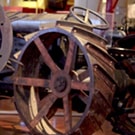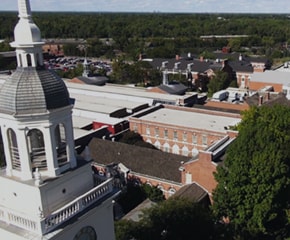Corn Planter, circa 1875
Add to SetSummary
Farmers started a year-round effort to raise food for livestock and the farm family by planting corn in hills. Double-row planters cut the time required to plant in half. Farmers cultivated with a shovel plow until corn was knee-high. They then planted squash or pumpkins to retain soil moisture (a form of double cropping). At harvest they husked ears (to feed pigs) and shocked stalks (to feed cattle).
Farmers started a year-round effort to raise food for livestock and the farm family by planting corn in hills. Double-row planters cut the time required to plant in half. Farmers cultivated with a shovel plow until corn was knee-high. They then planted squash or pumpkins to retain soil moisture (a form of double cropping). At harvest they husked ears (to feed pigs) and shocked stalks (to feed cattle).
Artifact
Corn planter
Date Made
circa 1875
Creators
Place of Creation
United States, Illinois, Quincy
Creator Notes
Manufactured by Vandiver Corn Planter Company in Quincy, Illinois based on patented designs by John W. Vandiver.

On Exhibit
at Henry Ford Museum in Agriculture
Object ID
30.1626.3
Credit
From the Collections of The Henry Ford.
Material
Wood (Plant material)
Cast iron
Dimensions
Width: 57 in
Length: 33.5 in





